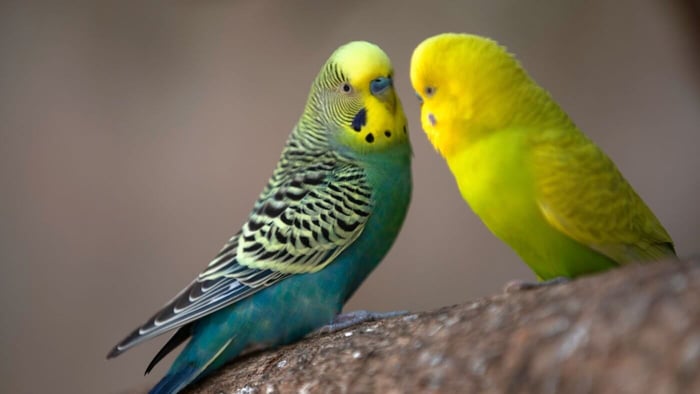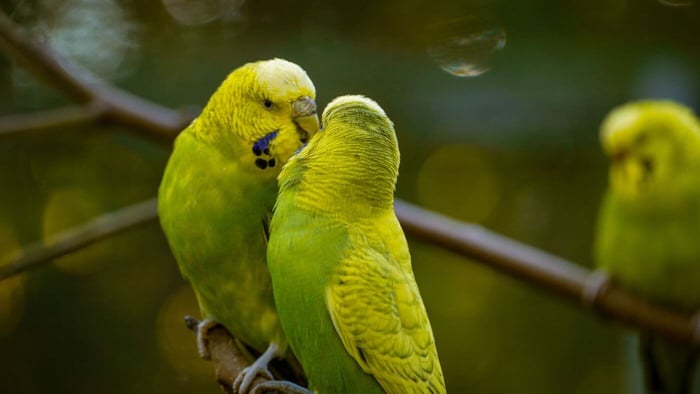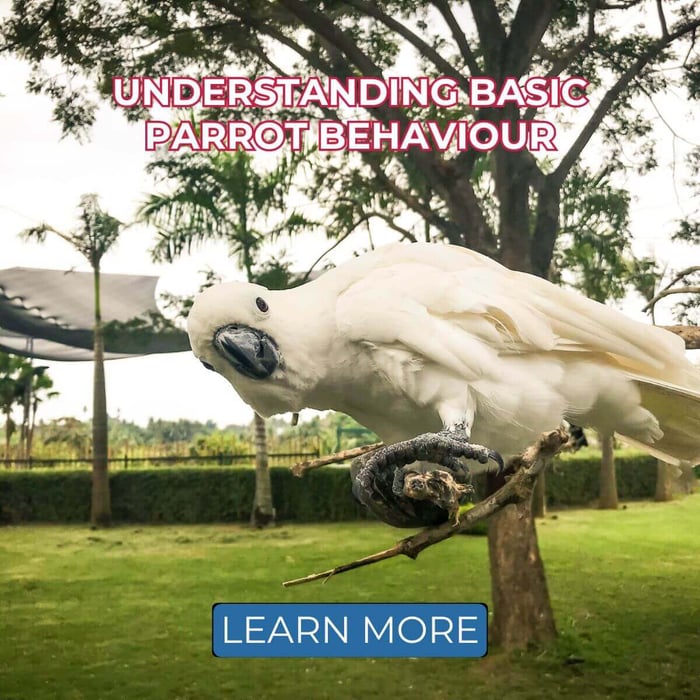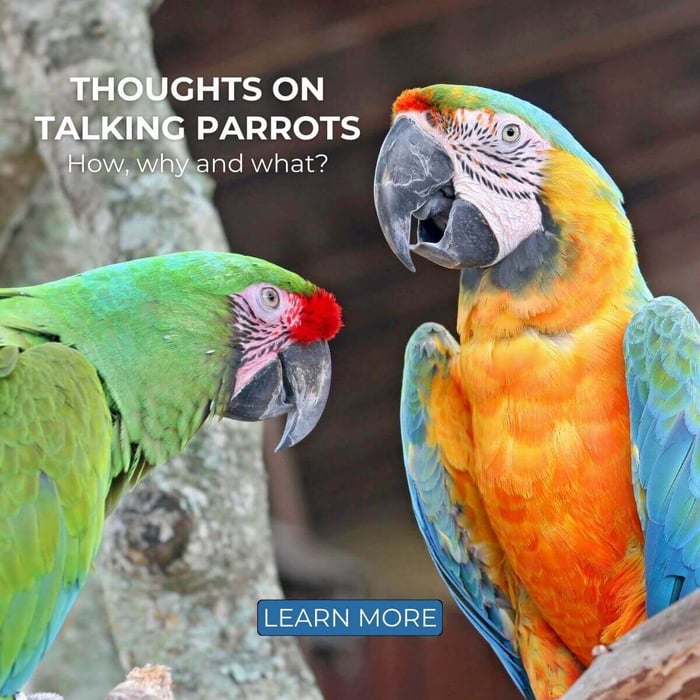Parakeet Sounds - What Do They Mean?
Parakeets, like all parrots, can be noisy birds. If you're considering adding one to your family, it's essential not only to accept these screeches and whistles but also to understand what they mean. Parakeet sounds offer valuable insights into your bird's mood and well-being, making it important for any pet owner to recognise and interpret these vocalisations.
In this post, we will explore some of the most common parakeet sounds and what they can tell you about your feathered friend.
Budgie Sounds & Their Meanings
Budgies (Melopsittacus undulatus), also known as parakeets, are the most popular species of pet parakeets. While small in size, these birds are incredibly vocal, and their sounds play a crucial role in communication. Budgies are highly social animals, and their vocal behaviour can vary significantly depending on their emotions, environment, and interactions with their human companions.

1. Contact Calls: 'EEP!'
The most common sound you will hear from your parakeet is a contact call. This high-pitched, shrill shriek is often referred to as an 'EEP!' and serves a very important purpose in the wild. In their natural habitat, budgies use contact calls to keep in touch with their flock members, especially in large groups where visibility can be limited.
While these calls can be startling to us humans, they are essential for your budgie's communication. If your parakeet seems to emit these calls constantly, it could be a sign that your bird is feeling lonely or anxious. Budgies are incredibly social creatures and thrive on interaction, so consider providing your parakeet with a companion if you notice excessive contact calling.
However, it's important to understand that not all contact calls are a sign of distress. Sometimes, they simply reflect your parakeet's desire to remain in constant communication with you or its environment.
2. Warbles
Warbling is a sound most commonly associated with male budgies, who use it to attract females or to communicate within their flock. Warbles are soft, melodic sounds that might include various pitches and tones. A warbling budgie is likely happy and comfortable in its environment, and this is often considered a positive sign.
Interestingly, some budgies can pick up sounds they hear around the house, including human speech or household noises. If you've trained your budgie to speak or mimic certain sounds, you might even hear these incorporated into their warbling!
If you notice your budgie warbling and bobbing its head in a rhythmic pattern, it's likely trying to impress a mate or simply expressing joy. This behaviour is typical of a healthy, contented parakeet.
3. Squawking
A squawk is a loud, sharp scream that your parakeet might make if it is startled, excited, or trying to communicate its presence. Often, you'll hear squawking when a bird takes off in flight or during a sudden movement or change in its environment. A squawk can also occur if your parakeet is trying to get your attention.
While this noise can be alarming, it's usually not a cause for concern. However, it's always a good idea to investigate the situation. If your bird seems particularly agitated, it might be worth checking for any external threats or disturbances. On the other hand, if the squawking seems to occur simply because your bird wants attention or food, it may just be an expression of hunger or excitement.
4. Fighting Parakeet Sounds

When parakeets feel threatened, territorial, or upset, they can produce fighting sounds. These noises often include shrill, screaming calls such as 'EEH-EEH-EEH,' usually made when there is a disagreement over resources such as food or space. These sounds indicate that your bird feels threatened or is asserting its boundaries.
Another less common fighting sound is a soft hissing noise, which typically occurs when a parakeet is being restrained. If you need to hold your bird for medical reasons or other interventions, it might let out a gentle hiss to express its displeasure.
Fighting sounds can be unsettling, but often, they are part of your parakeet's natural behaviour. If they happen after you fill the food bowl, it's usually nothing to worry about. However, if there are signs of aggression or stress between birds, you should observe them more closely and intervene if necessary.
5. Muttering
When your budgie is feeling especially relaxed or sleepy, it might produce a soft, gentle muttering sound. This noise often happens when the bird is too tired to continue its warbling or singing but still wants to express contentment.
Muttering is often considered one of the sweetest and most endearing sounds you can hear from your parakeet. It's a clear sign that your bird is at ease, either enjoying its environment or settling in for a rest. This sound usually accompanies calm and relaxed body language, such as resting quietly on a perch.
6. Grinding
A grinding sound, usually produced by your parakeet's beak, is another positive sound. When a budgie grinds its beak, it often means the bird is relaxed and content. You might hear this noise when your parakeet is resting or preparing to sleep after a feeding session.
Beak grinding is a sign that your parakeet feels safe and comfortable in its environment. It's also a natural part of their daily routine, often signalling the bird's readiness to settle down for the night.
7. Talking
Budgies are well-known for their ability to mimic human speech. With time and training, some parakeets can develop quite an impressive vocabulary. While not all budgies will learn to talk, those that do often begin with simple phrases and sounds, which may be repeated over time.
If you've been working with your budgie on talking, keep in mind that it can be a lengthy process. However, the opportunity to bond with your bird through talking training is always worth the effort. Even if your budgie doesn't become a conversationalist, it's always a joy to hear them try to communicate through mimicry.
Conclusion
While it can be frustrating when your parakeet starts screaming or making noise during the early hours of the morning, it's important to remember that parakeet sounds serve a purpose. They provide insights into your bird's mood and overall well-being. By paying attention to these vocalisations, you can better understand how your budgie is feeling and address any potential issues promptly.
Along with the sounds, always keep an eye on your parakeet's body language. Over time, you'll become adept at interpreting both visual and auditory cues, helping you become more in tune with your bird's needs.
By understanding and responding to your parakeet sounds, you're ensuring your bird's happiness and health, making it an even more rewarding companion.




